
What is the history behind Hanukkah?
Chanukah, or Hanukkah, is a Jewish celebration revolving around the rededication of the Second Temple in Jerusalem. The Jewish word Chanukah can be translated as "dedication."
The history behind Hanukkah started around 200 B.C. when Syria conquered Judea. The Seleucid King, Antiochus III, allowed the Jews to continue to practice their religion and worship their God. However, his son Antiochus IV Epiphanes outlawed Judaism. In 168 B.C., his soldiers massacred thousands of Jews in Jerusalem and defiled their holy Second Temple by sacrificing on an altar to Zeus, the Greek god.
After this event, the Jews revolted against the Syrians and went to cleanse the Temple. When they arrived at the Temple to begin its rededication, they found only a small vial of oil left that hadn't been violated.
The menorah, which at the time would have had seven branches to symbolize knowledge and creation, was meant to be kept burning every night. The small vial was only enough to burn for one night, but the oil kept the menorah burning for eight nights, enough time for them to get new consecrated oil.
After the miracle, an 8-day festival was declared to be celebrated to remember it each year. The miracle shows how the light will always defeat the darkness.
How and when is Hanukkah traditionally celebrated?
Hanukkah is celebrated beginning on the 25th day of Kislev, according to the Jewish calendar, which usually falls around late November or early December on the Gregorian calendar and continues for eight days. There are several traditions in the celebration of Hanukkah, the most famous of which is lighting the menorah. A traditional menorah that burns in the Temple holds seven candles. A Hanukkah menorah holds nine candles, 8 of which represent the eight nights that the oil burned for in the Second Temple, and the 9th candle, the shamash, is the helper candle used to light the others.
Usually, the candles are lit just after sunset (except Friday nights, when they should be lit before the sun is down, so it is not lit on the Sabbath) and burn for at least 30 minutes. On the first night, you place two candles in the menorah, the shamash, and one for the first night. The shamash candle is placed in the center of the candelabra, and the first candle will be placed on the far right; the other seven candle slots are left empty. As the nights progress, you add candles for each day, moving from right to left.
To light the hanukkah menorah,
The shamash is first placed in the center. Then the other candles are placed, from left to right, one for each day that has passed so far.
When all the candles are in place, use a match, a lighter, or some other source to light the shamash candle.
Put the lighter down, pick up the shamash, and hold it with both hands. While holding it, you recite the blessings for Hanukkah.
Once the blessings have been recited, use the shamash to light the candles from left to right, the newest candle will get the newest light for the night.
After the menorah lighting ceremony, let the candles burn for at least 30 minutes.
Other Hanukkah traditions include eating potato latkes and other fried foods, gelt, and playing the dreidel. The dreidel is a 4-sided top used for games of chance. The four letters on each side are short for the Hebrew phrase that can be translated to "a great miracle happened there," another nod to the miracle of the oil burning for eight nights.
Depending on what letter the dreidel lands on, the player wins or loses gambling pieces (usually candy). The candy usually betted on dreidel games is gelt, chocolate coins usually wrapped in gold or silver foil. Another common treat around Hanukkah is fried food, especially jelly-filled donuts and potato latkes, a pancake made from potatoes and onions.
Lastly, Hanukkah is a time for family and gift-giving. It is a time of gathering and exchanging and laughter.
What kind of lights should I use for Hanukkah? Where should I hang them?
If you want to put up a light display on your roof and in your yard, several outdoor holiday lighting ideas can help you. Most people put holiday lights on their roofs and around their houses, wrapped around trees or bushes and lamp posts or other structures in front of the house.
Hanukkah colors are blue and white; you can also use gold or yellow. A blue and white color scheme for your lights would reflect Hanukkah well.
While you can use a few types of lights, LED lights are easily the best. They use up less energy, don't put off as much heat (less fire risk), and last much longer than incandescent lights. As a result, you will save time and money, and LEDs are easy to maintain.
Some ideas for Hanukkah lights are blue and white LED lights, Star of David lights, menorah lights, and dreidel lights. You can line your roof with white and blue lights and set up decorations in the yard. Inside your house, you can put up the menorah, of course, and you can hang smaller novelty lights. For example, you could put up strings of menorah lights and Stars of David. You can also put up other candles in your house and decorate the candle holders with blue and white Stars of David, menorahs, and dreidels.
You can get LED signs both inside and outside, and giant light-up decorations of menorahs, Stars of David, and other Hanukkah decorations.
What other decorations should I use to celebrate Hanukkah?
The menorah is not the only Hanukkah decoration you can use, as many things are associated with the celebration. Most Hanukkah decor ideas include the Star of David, Hanukkah candles, dreidels, latkes, and the colors blue and white.
In addition, blue and white blankets, pillows, homemade or bought Hanukkah signs and banners, and Star of David decorations are common. Then, of course, Hanukkah menorahs and candles are used, but other candles are also common Hanukkah decorations.
Do I need a professional to hang my lights?
Whether or not you should hire a professional depends on a few things:
How skilled you are at electrical work.
How big of a display you have.
How good you want it to look.
Professionals will know how to distribute the power to all the lights to ensure you don't blow a fuse, and they will have great tools and experience with hanging lights.
If you are confident in your abilities, you can hang your lights yourself, but if you don't want to take the time to do it yourself, don't know if you can do it safely, or have a lot of lights that you want to look good, you may want to look into hiring someone to help hang your lights.
How long can I hang my Hanukkah lights?
The menorah should only be used for the eight days of Chanukah. Still, outdoor lights on your house can probably be extended a bit longer, just like any other holiday decorations are set up a bit before and taken down a bit after.
You can also set up permanent holiday lighting, with color-changing lights so you can have an automatic display for any holiday. Then, you can simply turn them off or have general ambient lighting most days and change the colors to accommodate holidays and special occasions.
How can JellyFish lighting help me?
JellyFish Lighting is a lighting company that sets up permanent color-changing LED light displays that last for years. By having one permanent light display year-round, you don't have to set up and take down lights every holiday.
Using the remote, you can program the lights to any of over 16 million colors whenever you want. You can have general lighting for your home, lights for any holiday or special occasion, or turn them off and have no lights, all with one display.
Installation of the lights does cost about $25 to $30 per foot, and the remote controller is $650, but the display lasts for years with minor upkeep and maintenance. JellyFish also has a 1-year warranty on labor and a 3-year warranty that covers parts.
The remote allows you to change the colors of your lights and set your display to a nightly or weekly timer if you don't want to turn them on manually.
After just one installation, you have instant lighting for any occasion for the next several years.
What is the history behind Hanukkah?
Chanukah, or Hanukkah, is a Jewish celebration revolving around the rededication of the Second Temple in Jerusalem. The Jewish word Chanukah can be translated as "dedication."
The history behind Hanukkah started around 200 B.C. when Syria conquered Judea. The Seleucid King, Antiochus III, allowed the Jews to continue to practice their religion and worship their God. However, his son Antiochus IV Epiphanes outlawed Judaism. In 168 B.C., his soldiers massacred thousands of Jews in Jerusalem and defiled their holy Second Temple by sacrificing on an altar to Zeus, the Greek god.
After this event, the Jews revolted against the Syrians and went to cleanse the Temple. When they arrived at the Temple to begin its rededication, they found only a small vial of oil left that hadn't been violated.
The menorah, which at the time would have had seven branches to symbolize knowledge and creation, was meant to be kept burning every night. The small vial was only enough to burn for one night, but the oil kept the menorah burning for eight nights, enough time for them to get new consecrated oil.
After the miracle, an 8-day festival was declared to be celebrated to remember it each year. The miracle shows how the light will always defeat the darkness.
How and when is Hanukkah traditionally celebrated?
Hanukkah is celebrated beginning on the 25th day of Kislev, according to the Jewish calendar, which usually falls around late November or early December on the Gregorian calendar and continues for eight days. There are several traditions in the celebration of Hanukkah, the most famous of which is lighting the menorah. A traditional menorah that burns in the Temple holds seven candles. A Hanukkah menorah holds nine candles, 8 of which represent the eight nights that the oil burned for in the Second Temple, and the 9th candle, the shamash, is the helper candle used to light the others.
Usually, the candles are lit just after sunset (except Friday nights, when they should be lit before the sun is down, so it is not lit on the Sabbath) and burn for at least 30 minutes. On the first night, you place two candles in the menorah, the shamash, and one for the first night. The shamash candle is placed in the center of the candelabra, and the first candle will be placed on the far right; the other seven candle slots are left empty. As the nights progress, you add candles for each day, moving from right to left.
To light the hanukkah menorah,
The shamash is first placed in the center. Then the other candles are placed, from left to right, one for each day that has passed so far.
When all the candles are in place, use a match, a lighter, or some other source to light the shamash candle.
Put the lighter down, pick up the shamash, and hold it with both hands. While holding it, you recite the blessings for Hanukkah.
Once the blessings have been recited, use the shamash to light the candles from left to right, the newest candle will get the newest light for the night.
After the menorah lighting ceremony, let the candles burn for at least 30 minutes.
Other Hanukkah traditions include eating potato latkes and other fried foods, gelt, and playing the dreidel. The dreidel is a 4-sided top used for games of chance. The four letters on each side are short for the Hebrew phrase that can be translated to "a great miracle happened there," another nod to the miracle of the oil burning for eight nights.
Depending on what letter the dreidel lands on, the player wins or loses gambling pieces (usually candy). The candy usually betted on dreidel games is gelt, chocolate coins usually wrapped in gold or silver foil. Another common treat around Hanukkah is fried food, especially jelly-filled donuts and potato latkes, a pancake made from potatoes and onions.
Lastly, Hanukkah is a time for family and gift-giving. It is a time of gathering and exchanging and laughter.
What kind of lights should I use for Hanukkah? Where should I hang them?
If you want to put up a light display on your roof and in your yard, several outdoor holiday lighting ideas can help you. Most people put holiday lights on their roofs and around their houses, wrapped around trees or bushes and lamp posts or other structures in front of the house.
Hanukkah colors are blue and white; you can also use gold or yellow. A blue and white color scheme for your lights would reflect Hanukkah well.
While you can use a few types of lights, LED lights are easily the best. They use up less energy, don't put off as much heat (less fire risk), and last much longer than incandescent lights. As a result, you will save time and money, and LEDs are easy to maintain.
Some ideas for Hanukkah lights are blue and white LED lights, Star of David lights, menorah lights, and dreidel lights. You can line your roof with white and blue lights and set up decorations in the yard. Inside your house, you can put up the menorah, of course, and you can hang smaller novelty lights. For example, you could put up strings of menorah lights and Stars of David. You can also put up other candles in your house and decorate the candle holders with blue and white Stars of David, menorahs, and dreidels.
You can get LED signs both inside and outside, and giant light-up decorations of menorahs, Stars of David, and other Hanukkah decorations.
What other decorations should I use to celebrate Hanukkah?
The menorah is not the only Hanukkah decoration you can use, as many things are associated with the celebration. Most Hanukkah decor ideas include the Star of David, Hanukkah candles, dreidels, latkes, and the colors blue and white.
In addition, blue and white blankets, pillows, homemade or bought Hanukkah signs and banners, and Star of David decorations are common. Then, of course, Hanukkah menorahs and candles are used, but other candles are also common Hanukkah decorations.
Do I need a professional to hang my lights?
Whether or not you should hire a professional depends on a few things:
How skilled you are at electrical work.
How big of a display you have.
How good you want it to look.
Professionals will know how to distribute the power to all the lights to ensure you don't blow a fuse, and they will have great tools and experience with hanging lights.
If you are confident in your abilities, you can hang your lights yourself, but if you don't want to take the time to do it yourself, don't know if you can do it safely, or have a lot of lights that you want to look good, you may want to look into hiring someone to help hang your lights.
How long can I hang my Hanukkah lights?
The menorah should only be used for the eight days of Chanukah. Still, outdoor lights on your house can probably be extended a bit longer, just like any other holiday decorations are set up a bit before and taken down a bit after.
You can also set up permanent holiday lighting, with color-changing lights so you can have an automatic display for any holiday. Then, you can simply turn them off or have general ambient lighting most days and change the colors to accommodate holidays and special occasions.
How can JellyFish lighting help me?
JellyFish Lighting is a lighting company that sets up permanent color-changing LED light displays that last for years. By having one permanent light display year-round, you don't have to set up and take down lights every holiday.
Using the remote, you can program the lights to any of over 16 million colors whenever you want. You can have general lighting for your home, lights for any holiday or special occasion, or turn them off and have no lights, all with one display.
Installation of the lights does cost about $25 to $30 per foot, and the remote controller is $650, but the display lasts for years with minor upkeep and maintenance. JellyFish also has a 1-year warranty on labor and a 3-year warranty that covers parts.
The remote allows you to change the colors of your lights and set your display to a nightly or weekly timer if you don't want to turn them on manually.
After just one installation, you have instant lighting for any occasion for the next several years.
What is the history behind Hanukkah?
Chanukah, or Hanukkah, is a Jewish celebration revolving around the rededication of the Second Temple in Jerusalem. The Jewish word Chanukah can be translated as "dedication."
The history behind Hanukkah started around 200 B.C. when Syria conquered Judea. The Seleucid King, Antiochus III, allowed the Jews to continue to practice their religion and worship their God. However, his son Antiochus IV Epiphanes outlawed Judaism. In 168 B.C., his soldiers massacred thousands of Jews in Jerusalem and defiled their holy Second Temple by sacrificing on an altar to Zeus, the Greek god.
After this event, the Jews revolted against the Syrians and went to cleanse the Temple. When they arrived at the Temple to begin its rededication, they found only a small vial of oil left that hadn't been violated.
The menorah, which at the time would have had seven branches to symbolize knowledge and creation, was meant to be kept burning every night. The small vial was only enough to burn for one night, but the oil kept the menorah burning for eight nights, enough time for them to get new consecrated oil.
After the miracle, an 8-day festival was declared to be celebrated to remember it each year. The miracle shows how the light will always defeat the darkness.
How and when is Hanukkah traditionally celebrated?
Hanukkah is celebrated beginning on the 25th day of Kislev, according to the Jewish calendar, which usually falls around late November or early December on the Gregorian calendar and continues for eight days. There are several traditions in the celebration of Hanukkah, the most famous of which is lighting the menorah. A traditional menorah that burns in the Temple holds seven candles. A Hanukkah menorah holds nine candles, 8 of which represent the eight nights that the oil burned for in the Second Temple, and the 9th candle, the shamash, is the helper candle used to light the others.
Usually, the candles are lit just after sunset (except Friday nights, when they should be lit before the sun is down, so it is not lit on the Sabbath) and burn for at least 30 minutes. On the first night, you place two candles in the menorah, the shamash, and one for the first night. The shamash candle is placed in the center of the candelabra, and the first candle will be placed on the far right; the other seven candle slots are left empty. As the nights progress, you add candles for each day, moving from right to left.
To light the hanukkah menorah,
The shamash is first placed in the center. Then the other candles are placed, from left to right, one for each day that has passed so far.
When all the candles are in place, use a match, a lighter, or some other source to light the shamash candle.
Put the lighter down, pick up the shamash, and hold it with both hands. While holding it, you recite the blessings for Hanukkah.
Once the blessings have been recited, use the shamash to light the candles from left to right, the newest candle will get the newest light for the night.
After the menorah lighting ceremony, let the candles burn for at least 30 minutes.
Other Hanukkah traditions include eating potato latkes and other fried foods, gelt, and playing the dreidel. The dreidel is a 4-sided top used for games of chance. The four letters on each side are short for the Hebrew phrase that can be translated to "a great miracle happened there," another nod to the miracle of the oil burning for eight nights.
Depending on what letter the dreidel lands on, the player wins or loses gambling pieces (usually candy). The candy usually betted on dreidel games is gelt, chocolate coins usually wrapped in gold or silver foil. Another common treat around Hanukkah is fried food, especially jelly-filled donuts and potato latkes, a pancake made from potatoes and onions.
Lastly, Hanukkah is a time for family and gift-giving. It is a time of gathering and exchanging and laughter.
What kind of lights should I use for Hanukkah? Where should I hang them?
If you want to put up a light display on your roof and in your yard, several outdoor holiday lighting ideas can help you. Most people put holiday lights on their roofs and around their houses, wrapped around trees or bushes and lamp posts or other structures in front of the house.
Hanukkah colors are blue and white; you can also use gold or yellow. A blue and white color scheme for your lights would reflect Hanukkah well.
While you can use a few types of lights, LED lights are easily the best. They use up less energy, don't put off as much heat (less fire risk), and last much longer than incandescent lights. As a result, you will save time and money, and LEDs are easy to maintain.
Some ideas for Hanukkah lights are blue and white LED lights, Star of David lights, menorah lights, and dreidel lights. You can line your roof with white and blue lights and set up decorations in the yard. Inside your house, you can put up the menorah, of course, and you can hang smaller novelty lights. For example, you could put up strings of menorah lights and Stars of David. You can also put up other candles in your house and decorate the candle holders with blue and white Stars of David, menorahs, and dreidels.
You can get LED signs both inside and outside, and giant light-up decorations of menorahs, Stars of David, and other Hanukkah decorations.
What other decorations should I use to celebrate Hanukkah?
The menorah is not the only Hanukkah decoration you can use, as many things are associated with the celebration. Most Hanukkah decor ideas include the Star of David, Hanukkah candles, dreidels, latkes, and the colors blue and white.
In addition, blue and white blankets, pillows, homemade or bought Hanukkah signs and banners, and Star of David decorations are common. Then, of course, Hanukkah menorahs and candles are used, but other candles are also common Hanukkah decorations.
Do I need a professional to hang my lights?
Whether or not you should hire a professional depends on a few things:
How skilled you are at electrical work.
How big of a display you have.
How good you want it to look.
Professionals will know how to distribute the power to all the lights to ensure you don't blow a fuse, and they will have great tools and experience with hanging lights.
If you are confident in your abilities, you can hang your lights yourself, but if you don't want to take the time to do it yourself, don't know if you can do it safely, or have a lot of lights that you want to look good, you may want to look into hiring someone to help hang your lights.
How long can I hang my Hanukkah lights?
The menorah should only be used for the eight days of Chanukah. Still, outdoor lights on your house can probably be extended a bit longer, just like any other holiday decorations are set up a bit before and taken down a bit after.
You can also set up permanent holiday lighting, with color-changing lights so you can have an automatic display for any holiday. Then, you can simply turn them off or have general ambient lighting most days and change the colors to accommodate holidays and special occasions.
How can JellyFish lighting help me?
JellyFish Lighting is a lighting company that sets up permanent color-changing LED light displays that last for years. By having one permanent light display year-round, you don't have to set up and take down lights every holiday.
Using the remote, you can program the lights to any of over 16 million colors whenever you want. You can have general lighting for your home, lights for any holiday or special occasion, or turn them off and have no lights, all with one display.
Installation of the lights does cost about $25 to $30 per foot, and the remote controller is $650, but the display lasts for years with minor upkeep and maintenance. JellyFish also has a 1-year warranty on labor and a 3-year warranty that covers parts.
The remote allows you to change the colors of your lights and set your display to a nightly or weekly timer if you don't want to turn them on manually.
After just one installation, you have instant lighting for any occasion for the next several years.
How much do permanent christmas lights cost?
How much do permanent christmas lights cost?
How much do permanent christmas lights cost?






Are Permanent Christmas Lights Worth It?
Are Permanent Christmas Lights Worth It?
Are Permanent Christmas Lights Worth It?
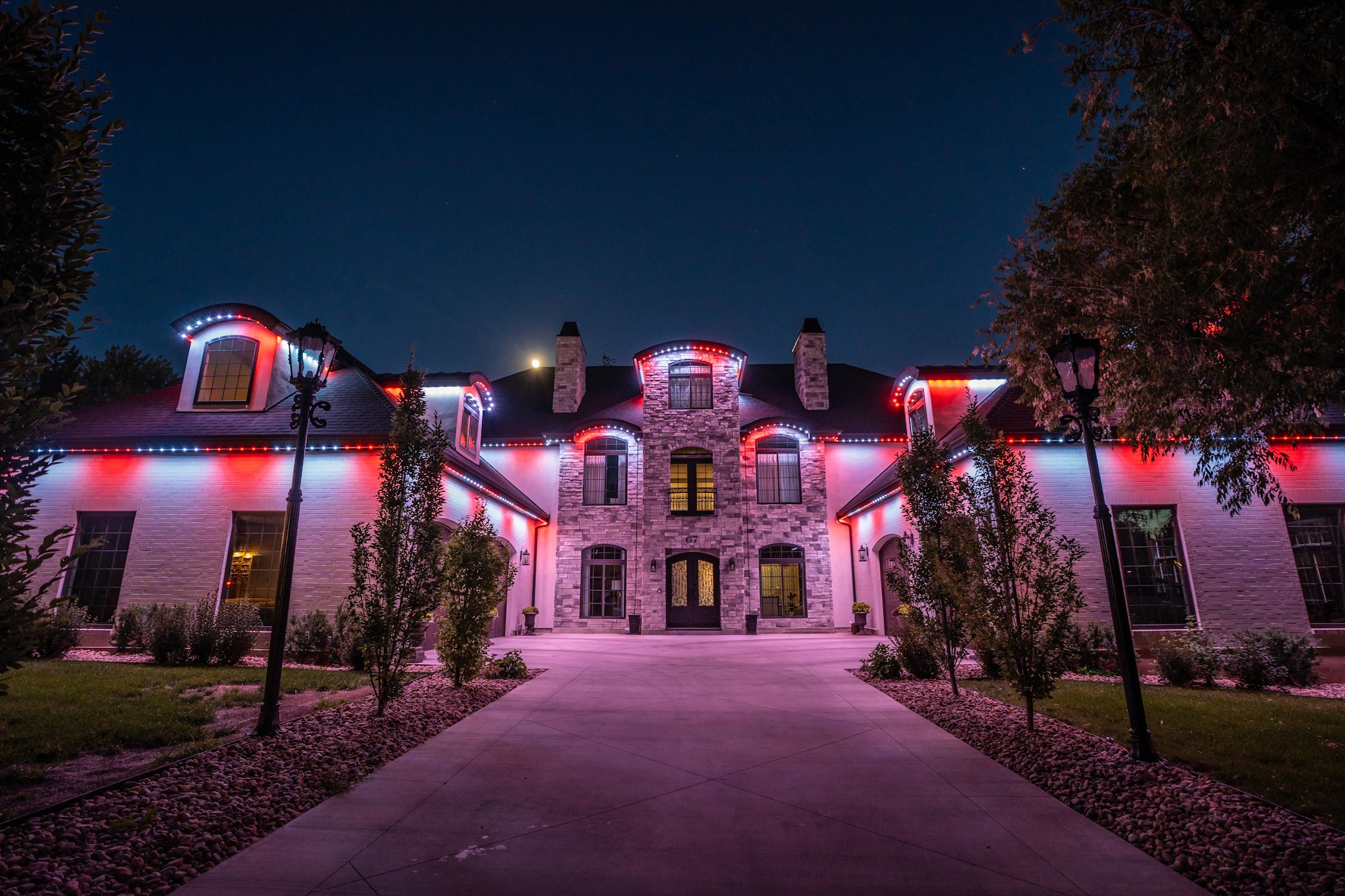





Illuminate Your Love Story: Transforming Wedding Venues with JellyFish Lighting
Illuminate Your Love Story: Transforming Wedding Venues with JellyFish Lighting
Illuminate Your Love Story: Transforming Wedding Venues with JellyFish Lighting
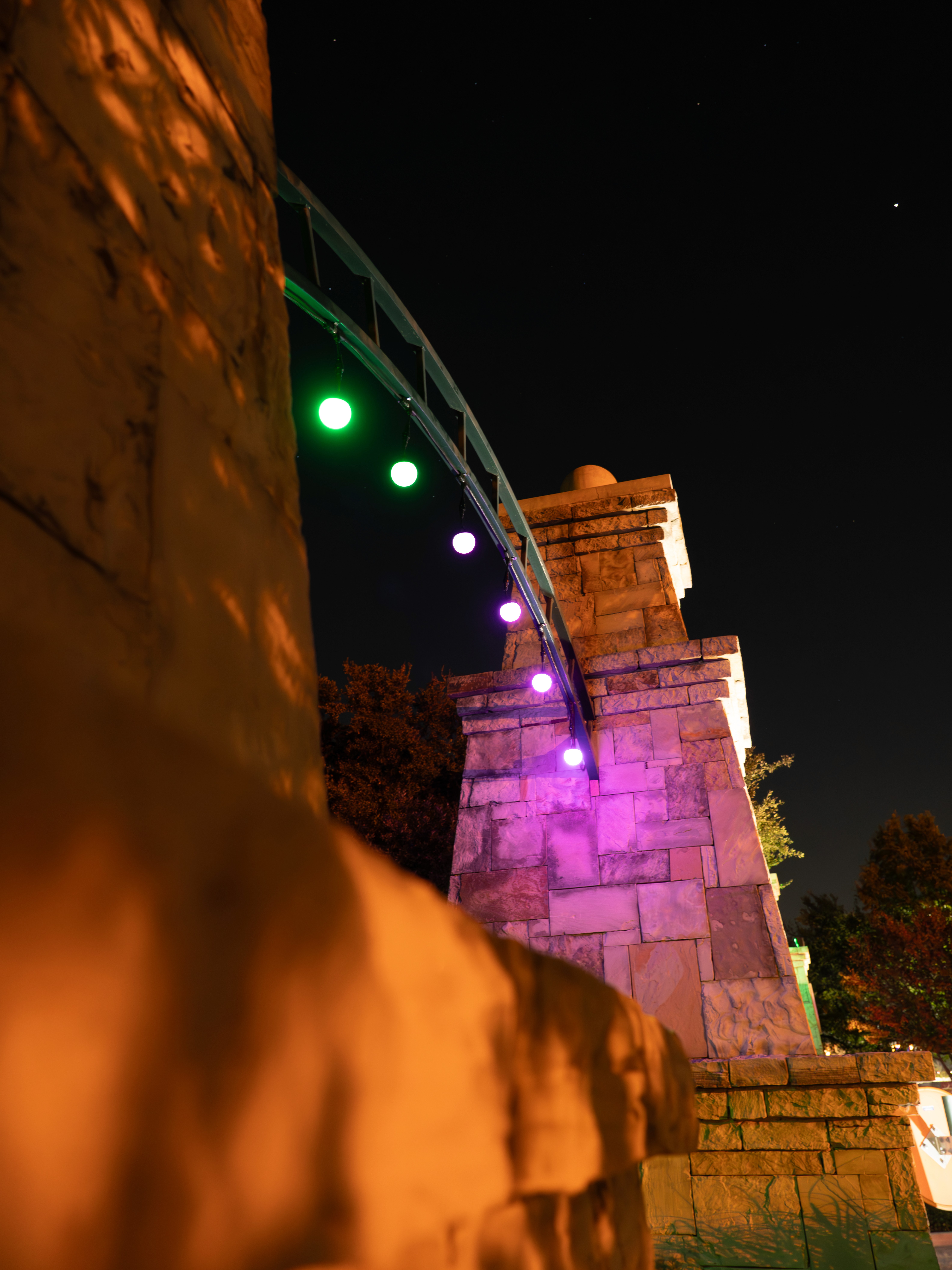





Illuminating Thrills: How JellyFish Lighting Enhances Amusement Park Experiences
Illuminating Thrills: How JellyFish Lighting Enhances Amusement Park Experiences
Illuminating Thrills: How JellyFish Lighting Enhances Amusement Park Experiences
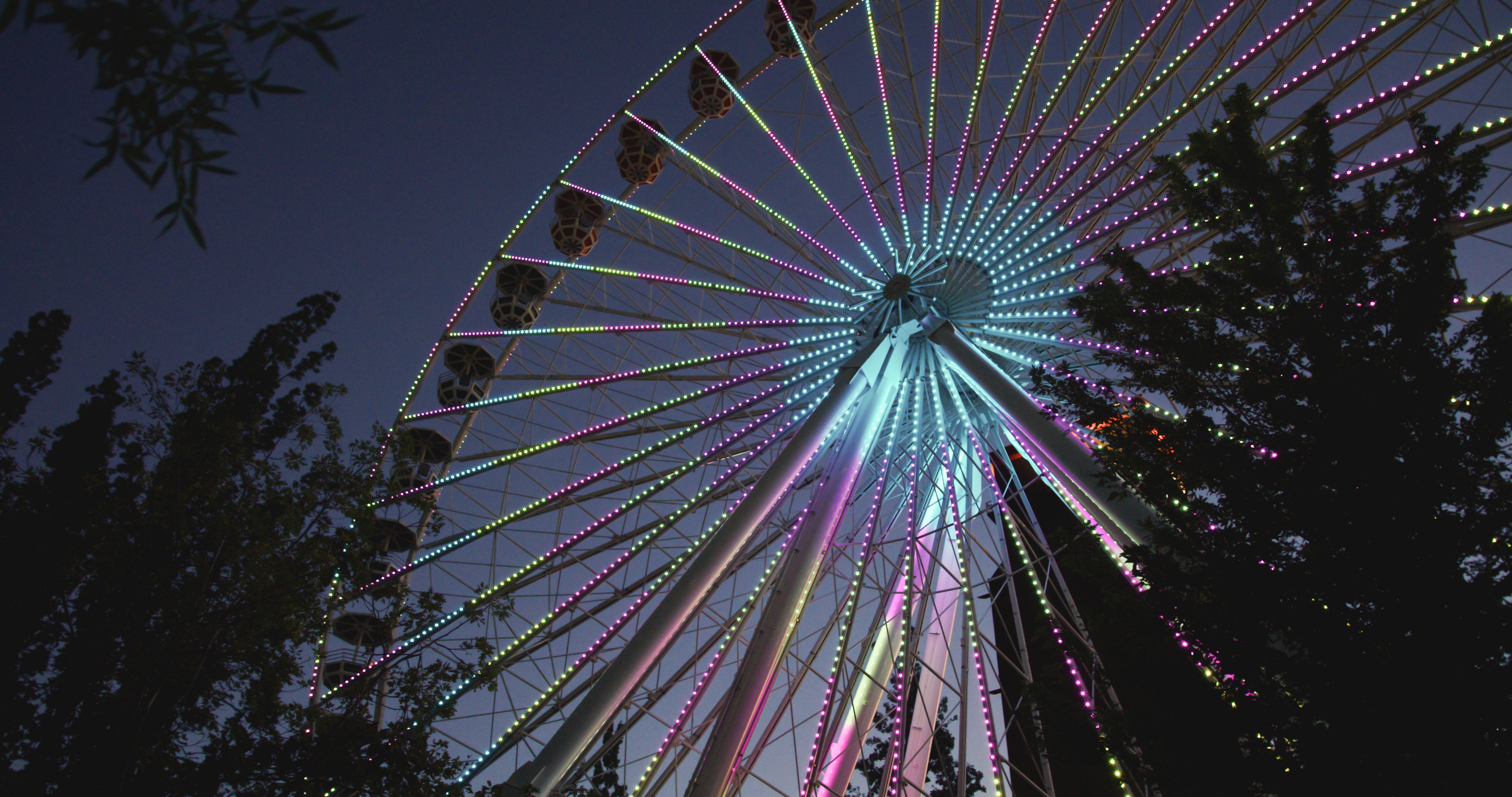





Announcing JellyFish Cloud 2.0
Announcing JellyFish Cloud 2.0
Announcing JellyFish Cloud 2.0
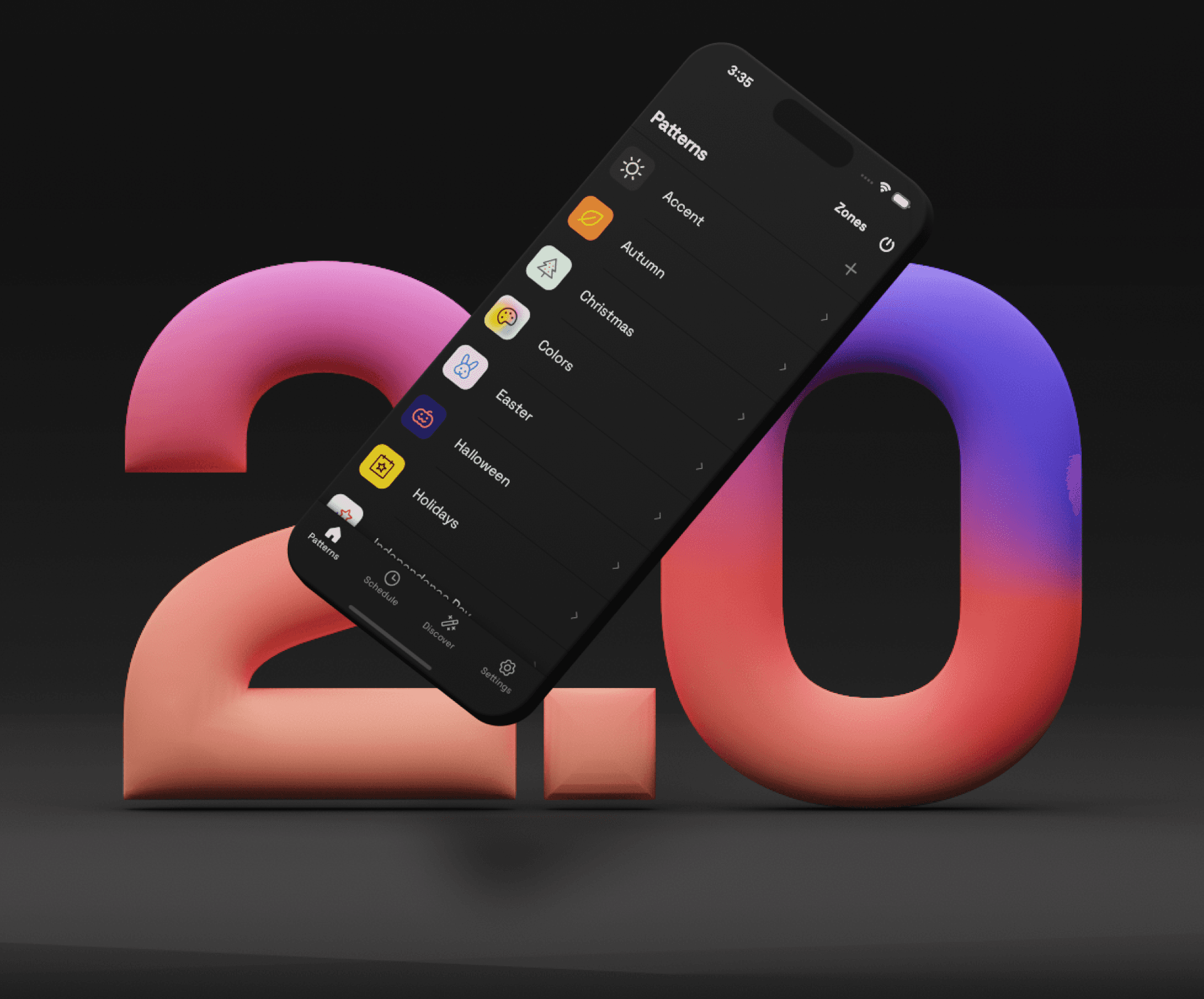





How do Soffit Lights compare to Permanent LED Holiday Lighting?
How do Soffit Lights compare to Permanent LED Holiday Lighting?
How do Soffit Lights compare to Permanent LED Holiday Lighting?
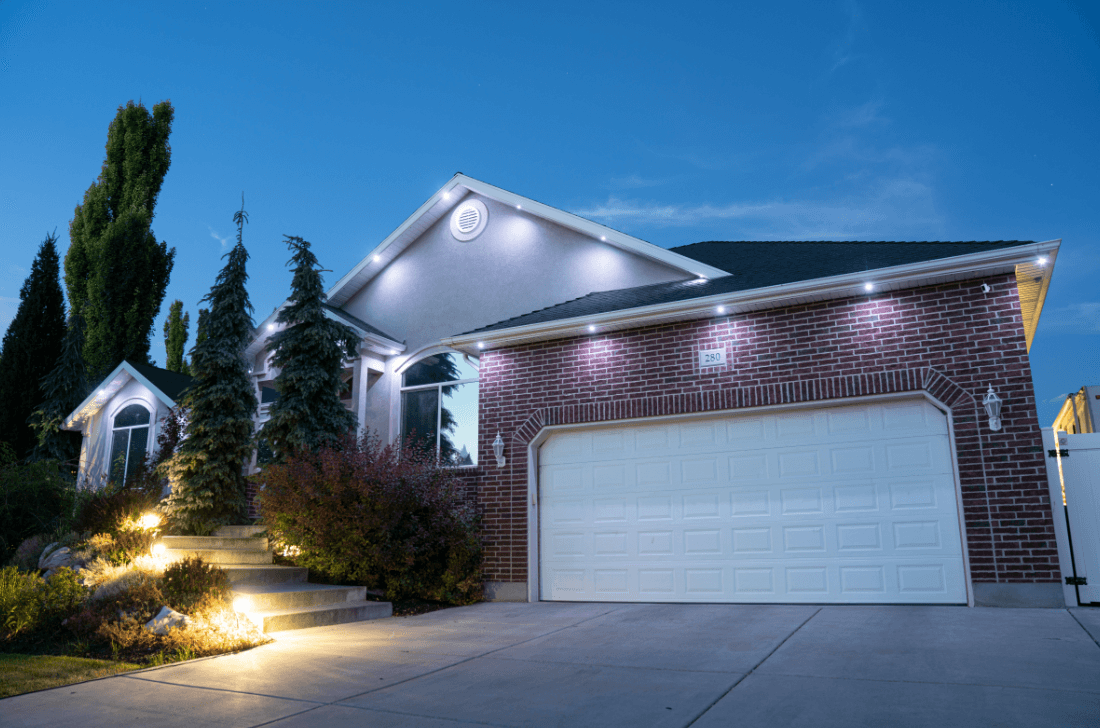





Brighten Home Life With The Right House Lights
Brighten Home Life With The Right House Lights
Brighten Home Life With The Right House Lights
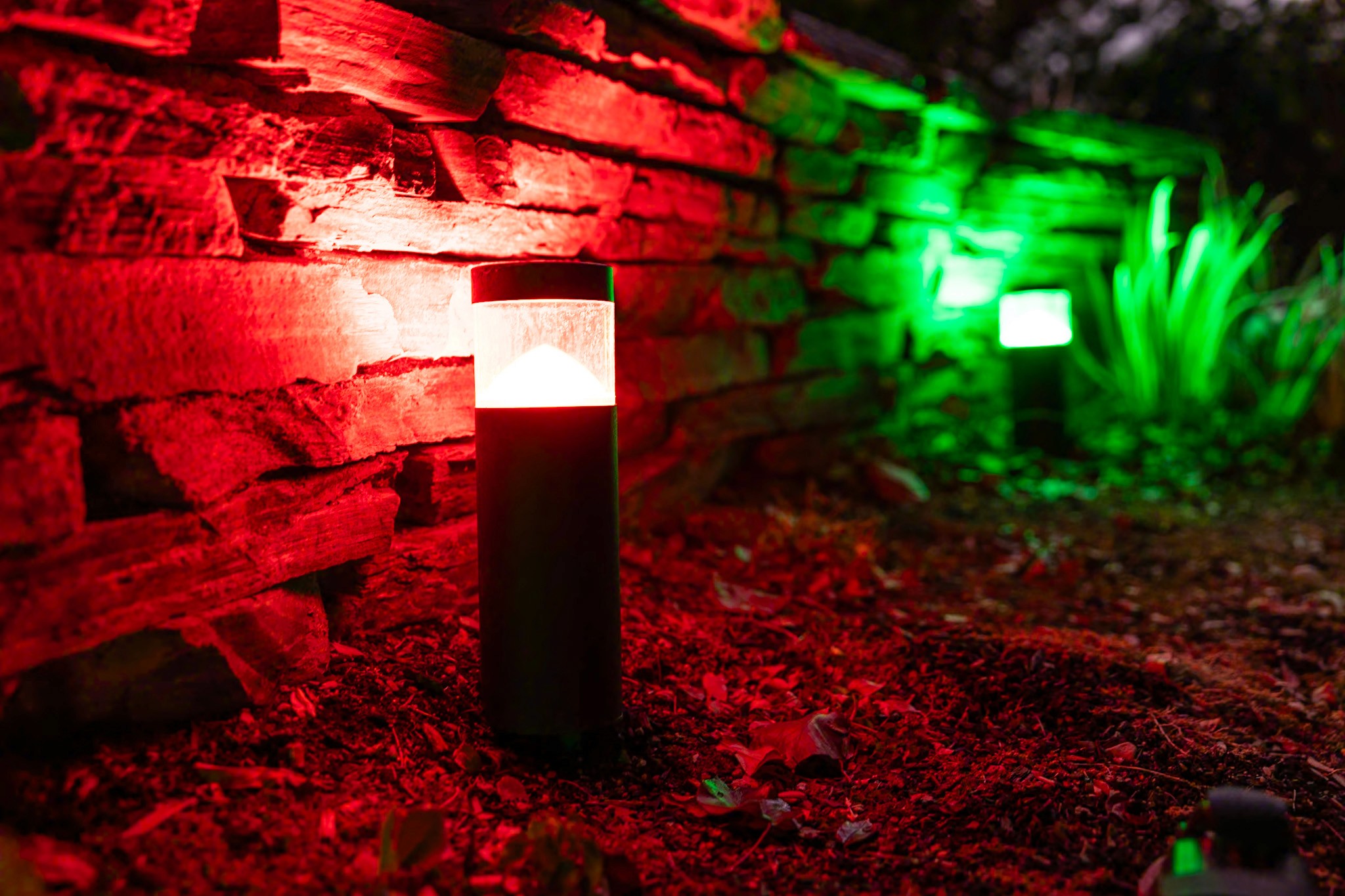





The Benefits of Outdoor Landscape Lighting
The Benefits of Outdoor Landscape Lighting
The Benefits of Outdoor Landscape Lighting
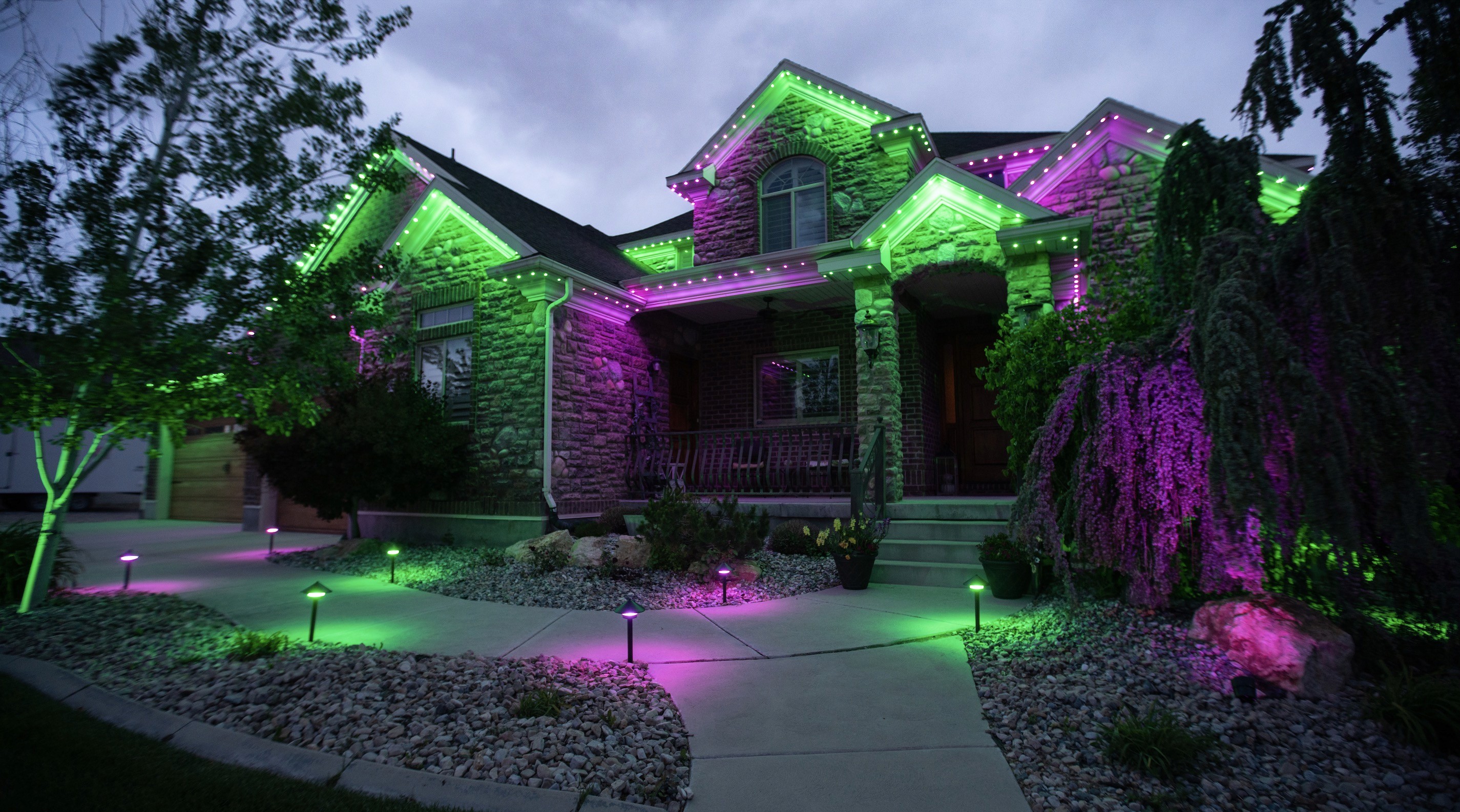





Get color-changing permanent Christmas lights today
© 2025 JellyFish Lighting · All rights reserved · Patent #9506609
Get color-changing permanent Christmas lights today
© 2025 JellyFish Lighting · Patent #950660
Get color-changing permanent Christmas lights today
© 2025 JellyFish Lighting · All rights reserved · Patent #9506609